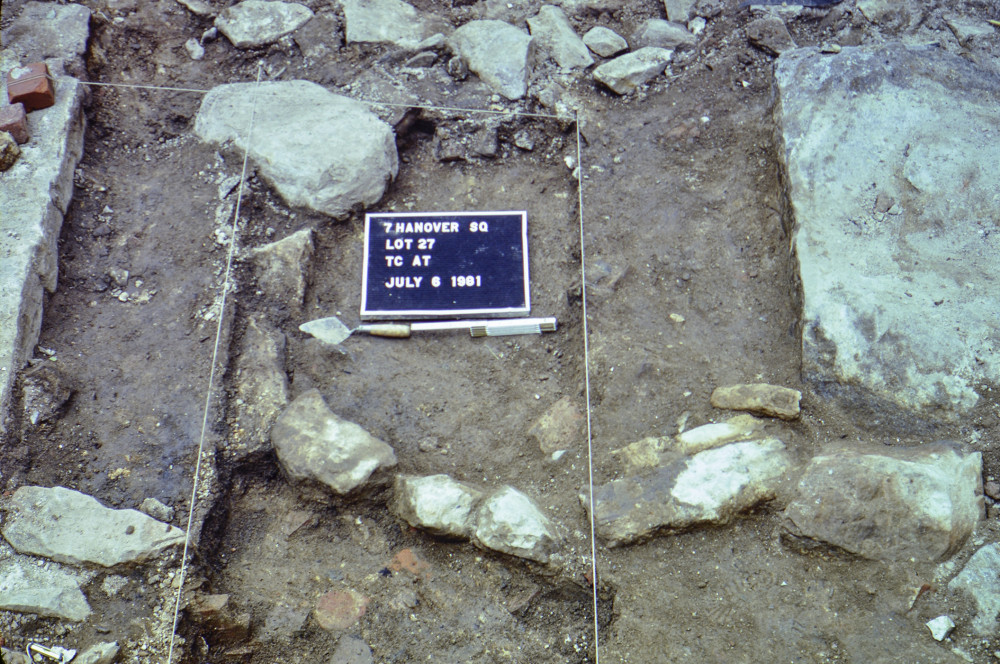This context (Catalog #1101, Lot 27*, Test Cut AT, Strat 1, Level a) consists of artifacts from within the brown silty sand of a trench that was dug to install a feature located in the front portion of Lot 27*, adjacent to the Lot 26* boundary wall. Test Cut AT was placed in this area and measured two feet and a half by six feet. Excavation began one and a third feet below the wooden basement floor of building #2. The excavators uncovered what appeared to be part of a circular stone feature. The area lying within the stone ring was in the eastern portion of the test cut, and the feature was cut off outside of the boundaries of the test cut. It is likely that the feature was associated with the building phase prior to the construction of building #3. To the south of the feature, it was likely cut off by the installation of stone slabs associated with one of the later building phases.
The remaining part of the feature only consisted of one coarse of stones that were embedded in the brown silty sand with mortar that constituted the uppermost deposit excavated in the test cut. The deposit sloped downward from west to east and was between two to six inches thick. This deposit likely represents the pit or trench dug for the installation of the feature. During excavation, only a portion of this deposit was excavated by itself without being mixed with the underlying deposits. At a depth of approximately six inches below the excavation surface, there was a pit dug to a deeper level within the feature near its western border. The soil was similar to the brown silty sand that overlay it, but appeared to include more cut stone and cobbles. It was thought that the pit was a deeper extension of the hole dug to install the feature.
The excavators believed that it was possible that the feature functioned either as a privy or a drainage sump. In either case, a deeper hole in the middle of the pit would assist with drainage, and would be consistent with either function. The ceramic assemblage suggests that the feature was installed sometime after the introduction of creamware in the 1760s and prior to the introduction of pearlware in the 1780s. For more information about the deposits associated with Lot 27*, please read pages 22 to 112 of the 7 Hanover Square site report.
-
Collection method
This context was excavated using trowels. All of the soil was dry-screened using 1/4 inch mesh.
-
Soil description
Brown silty sand with decaying mortar and charcoal



